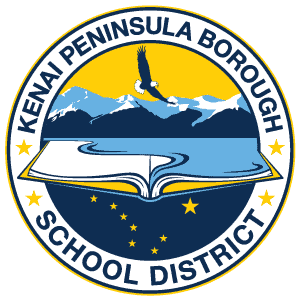Seward Middle School Reconfiguration
The question: "Should Seward Middle School be reconfigured to include grades 6, 7, and 8?" will be addressed in a public hearing, Thursday, October 24, 2013, 7:00 P.M., at Seward Middle School. This public hearing is part of a process that began with administrative discussions in the spring of 2012, and the first Seward Site Council meeting on November 8, 2012, with an agenda item addressing the topic.
Dr. Steve Atwater, Superintendent, received a letter from the Seward Site Council and the three Seward Principals requesting that the KPBSD Board of Education reconfigure Seward Middle School to include grades 6, 7, and 8.
"The next step in the process is for me to make a recommendation to the Board that either supports, or does not support this request," said Atwater. "Before doing so, I will hold a public hearing regarding this proposal on Thursday, October 24, at 7:00 P.M. at Seward Middle School. The Seward and Moose Pass public, including staff and students, are invited to provide comment on this matter at this time. The hearing will be recorded so that the Board can, as necessary, view it."
Background
What is the problem or need that you are addressing by bringing forth this request?
Declining enrollment at Seward Middle School has caused students to have decreased curricular and co-curricular opportunities. In order to give Seward students consistent K-12 opportunities, no matter what the class size, a reconfiguration needs to take place in order to better balance the averages.
Seward area schools are beholden to local birth rates. Class sizes can fluctuate between 30 (current third grade) and 60 (current first grade). These dramatic changes expand and constrict the staffing formula so that course offerings and co-curricular opportunities are dependent on class size. This is most prevalent at Seward Middle School because they currently (2013-2014) only offer two grades: seventh and eighth. The law of averages affects two grades greater than four grades (Seward High School 9-12) and seven grades (Seward Elementary K-6).
What solutions were considered when exploring how best to address this problem or meet this need?
The three Seward area administrators were asked to research and present options at a February 2013 Community Meeting. This occurred before a community survey was published in March, 2013.
Options reviewed
- Status-Quo (no reconfiguration change)
- K-5, 6-8, 9-12
- K-6, 7-9, 10-12
- K-8 (at elementary site), 9-12 (at high school site), current middle school utilized for another purpose
- K-2 (at middle school site), 3-8 (at elementary site), 9-12 (remain at current high school)
- K-6 (at elementary site) and 7-12 (at high school site), middle school utilized for another purpose
A formula change was not considered as a solution because:
- Schools have no control over the KPBSD staffing formula
- A staffing formula change does not fully solve the problem of low student numbers that affect activities such as choir, band, and sports.
What steps were taken to gather public input on the proposed plan (moving the 6th grade to the middle school)
This conversation and process officially began at the November 2012 Seward schools Site Based Council (SBC) meeting, although it was originally brought up in the spring of 2012.
Meetings were held:
- 11/8/12 Seward Schools SBC (22 participants)
- 12/13/12 Seward Schools SBC (15 participants)
- 1/28/13 Seward Schools SBC (28 participants)
- 2/12/13 Community Meeting (43 attendees)
- 2/14/13 Seward Schools SBC (21 participants)
- 3/21/13 Seward Schools SBC (17 participants)
- 10/10/13 Seward Schools SBC (32 participants)
A widely advertised community meeting was held on February 12, 2013. At that meeting, the three Seward administrators presented on the problems the middle school faced, and on the ramifications of the following reconfiguration options (that were proposed by stakeholders as possible solutions to the problem.) This was highly advertised, 43 attendees were at the meeting, and it was reported with stories in local media.
Options reviewed at the February 12, 2013 meeting
- Status-Quo (no reconfiguration change)
- K-5, 6-8, 9-12
- K-6, 7-9, 10-12
- K-8 (at elementary site), 9-12 (at high school site), current middle school utilized for another purpose
At this meeting two more options were proposed; these options were investigated and the ramifications of those options were presented at the following SBC meeting on February 14, 2013.
- K-2 (at middle school site), 3-8 (at elementary site), 9-12 (remain at current high school)
- K-6 (at elementary site) and 7-12 (at high school site), middle school utilized for another purpose
Each of the options, outlined in a PowerPoint, was translated into specific questions into a public survey. The community survey draft was ordered by the Seward Site Based Council in November. It was based on a previous Soldotna Area Survey and presented for revisions and edits at the December and February meetings. It was published in February by the Seward Site-Based Council.
A public survey advertised through the schools and local media was opened for three weeks to help determine which solution was the best, given the situation and scenarios. Of the 226 respondents (94 parent/guardians, 47 community members, 45 students, 27 teachers, 13 non-teacher employees) 73% either agreed or strongly agreed that moving the sixth grade to the current 7-8 grade middle school was the best solution.
Next step: Public Hearing, Thursday, October 24, 2013, 7:00 P.M., at Seward Middle School (Hearing video)
